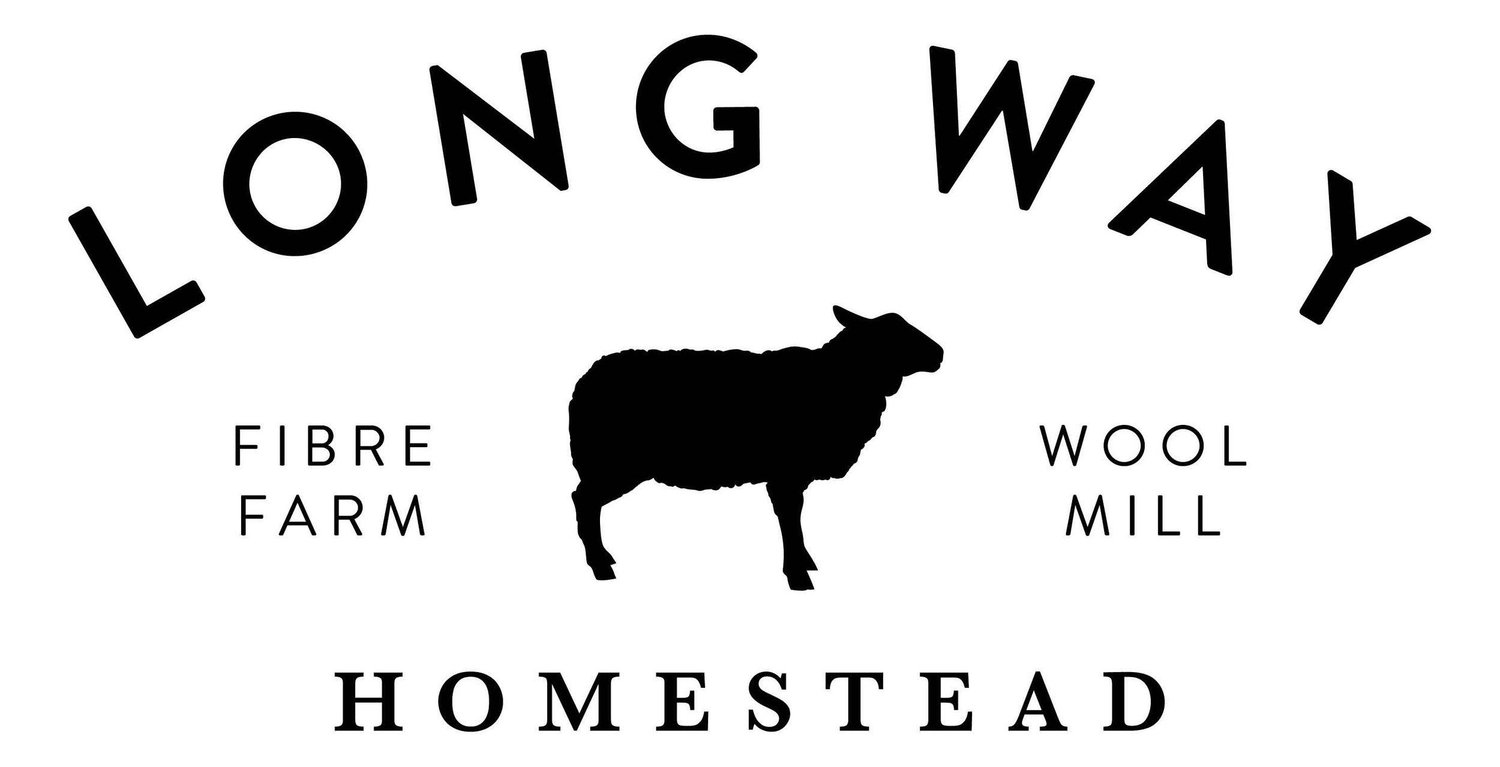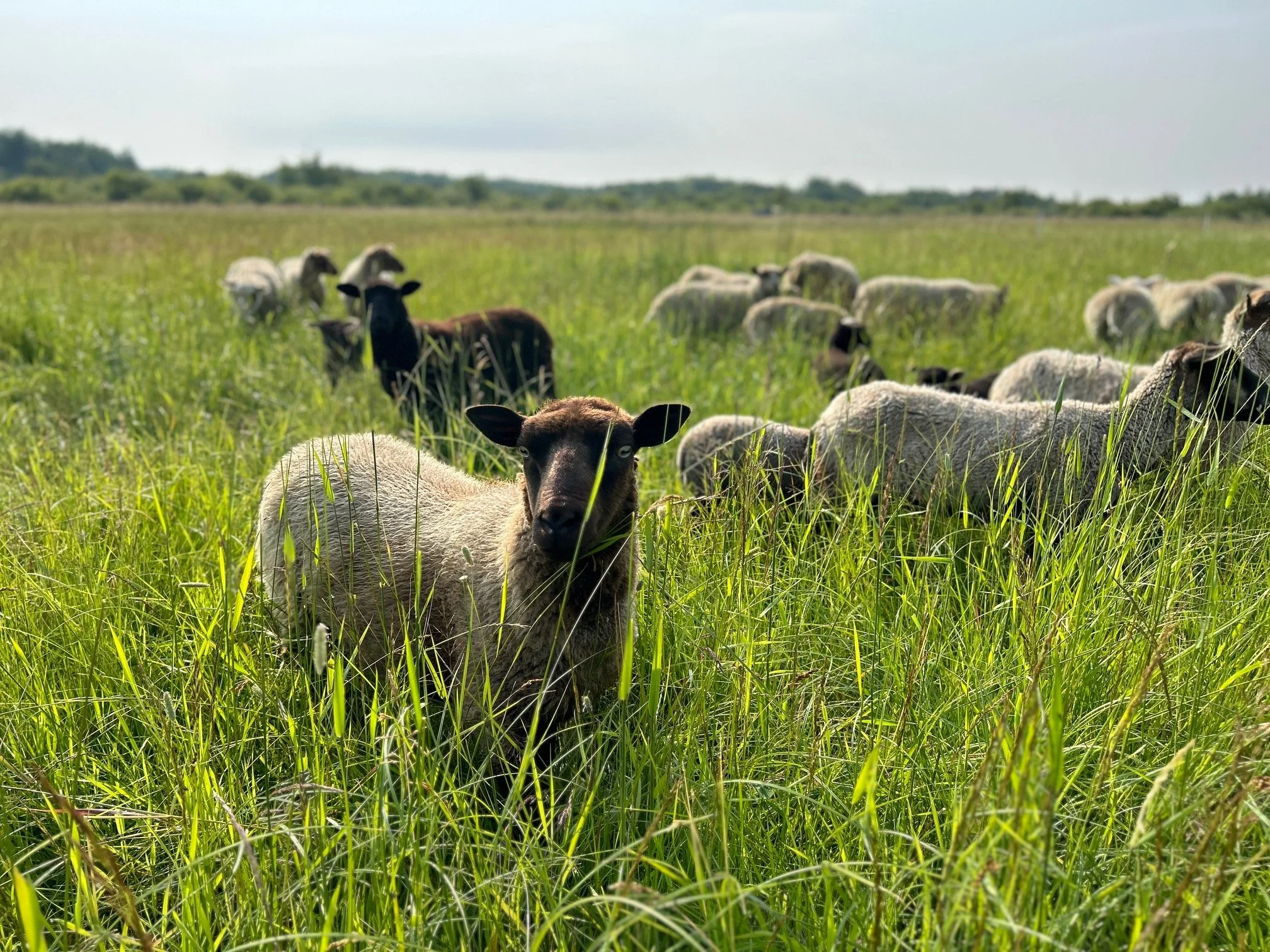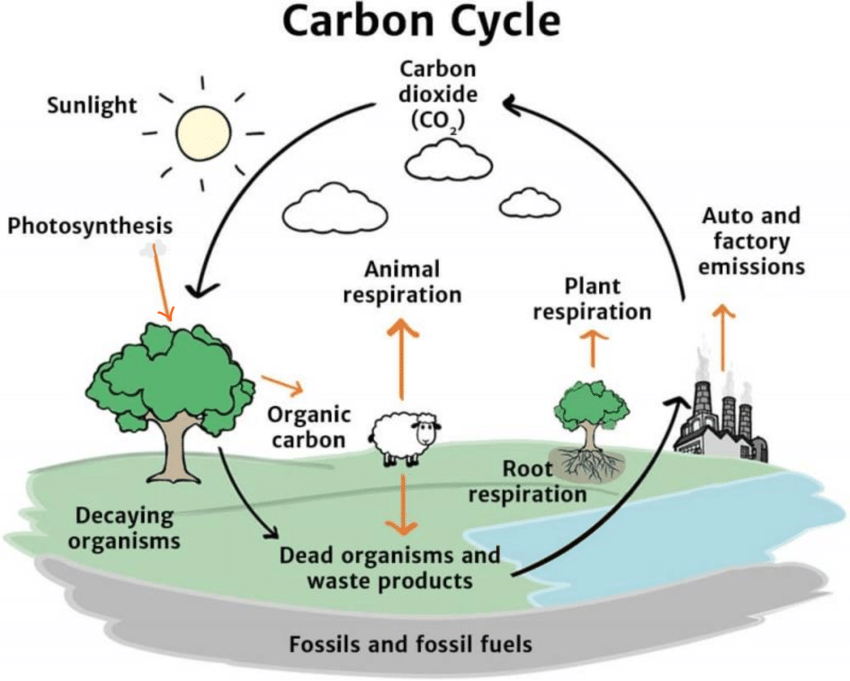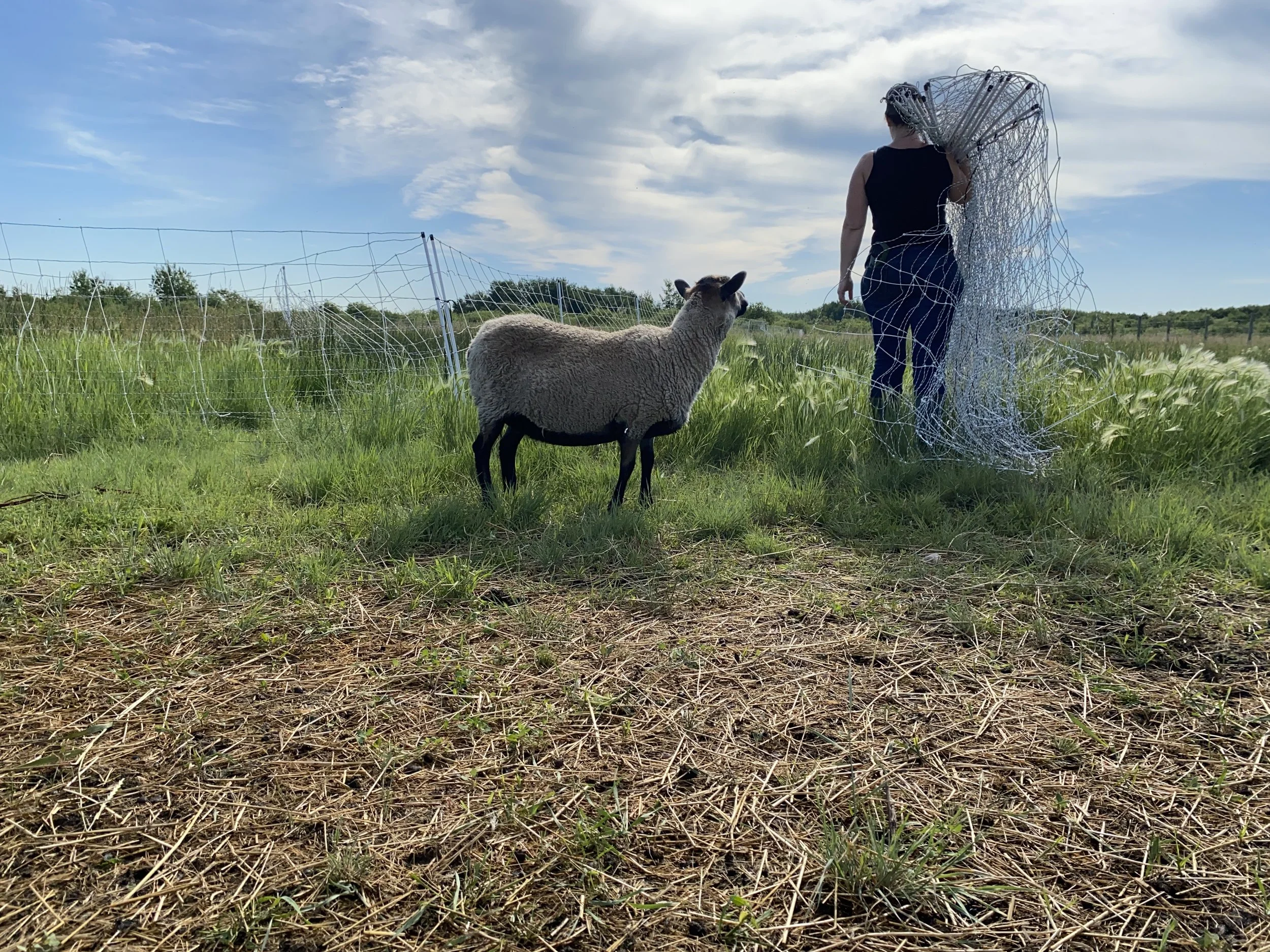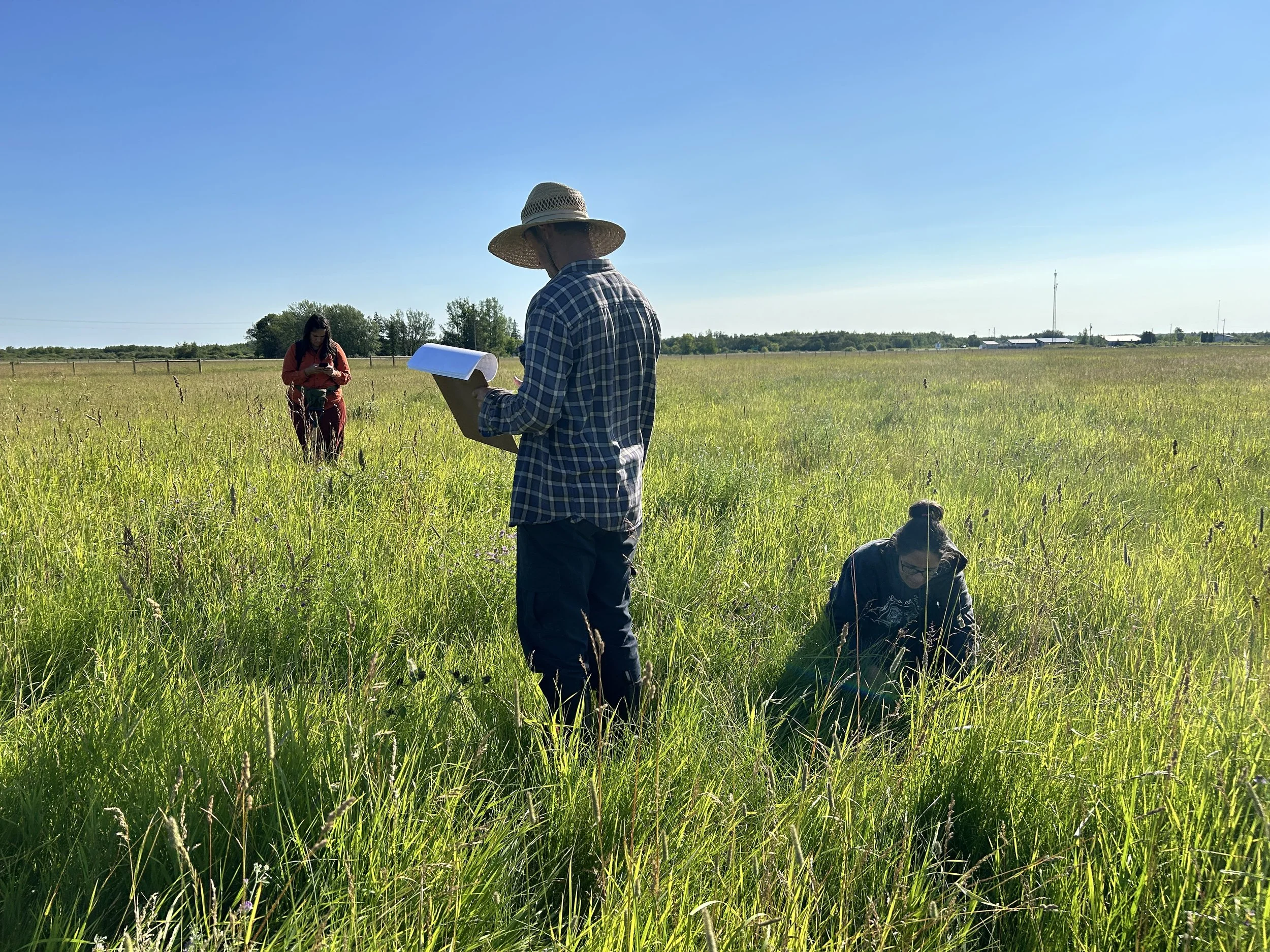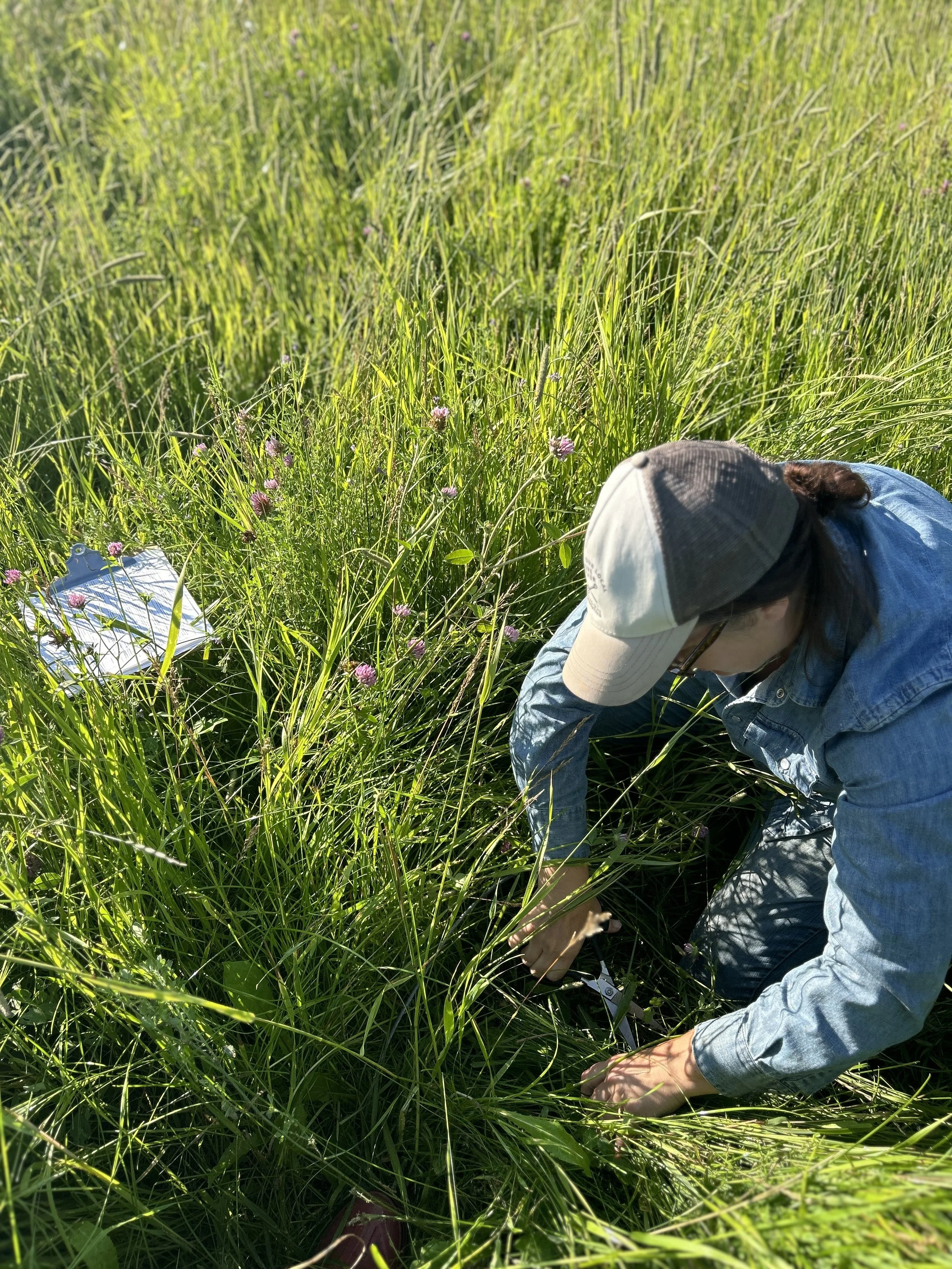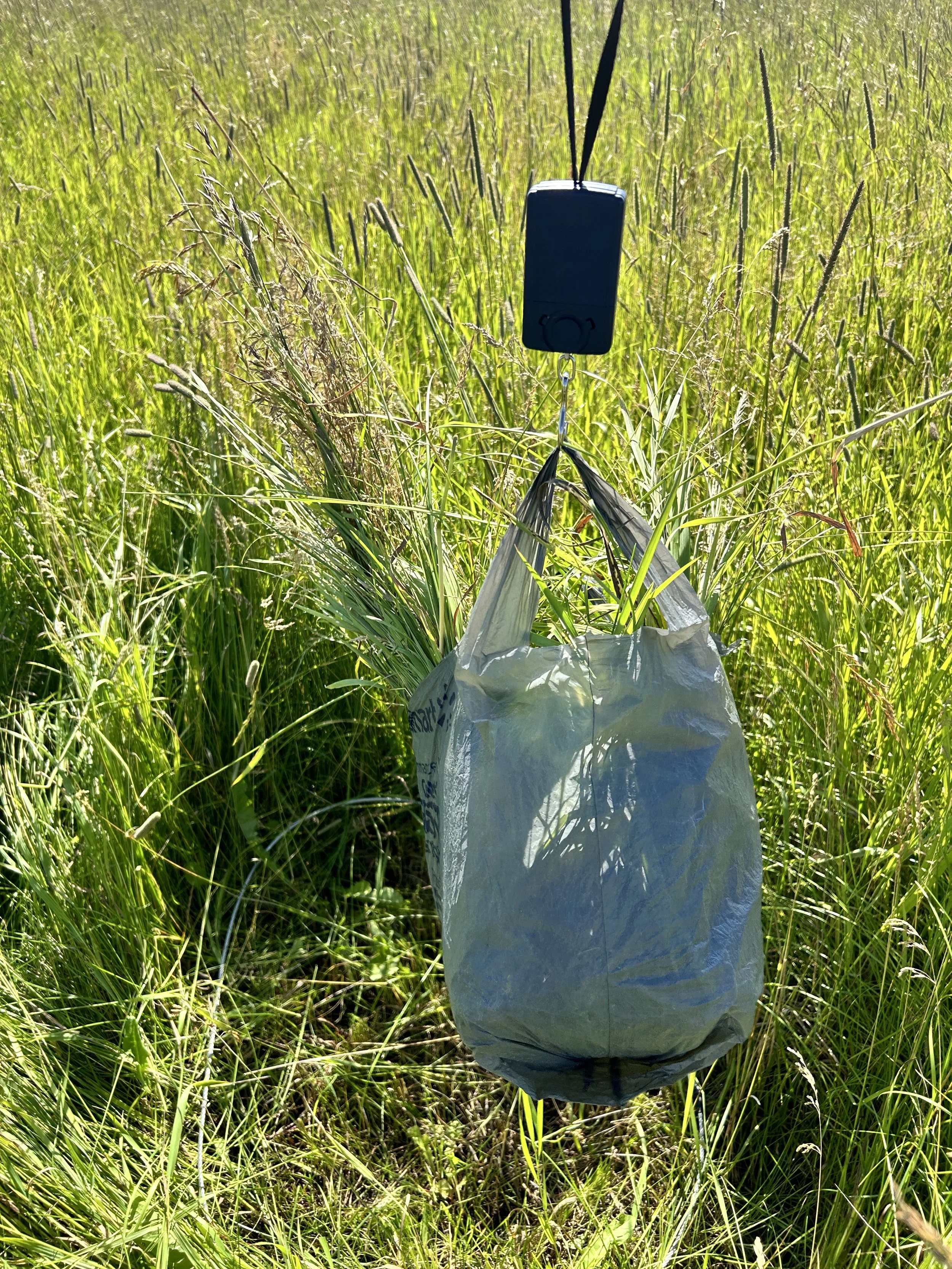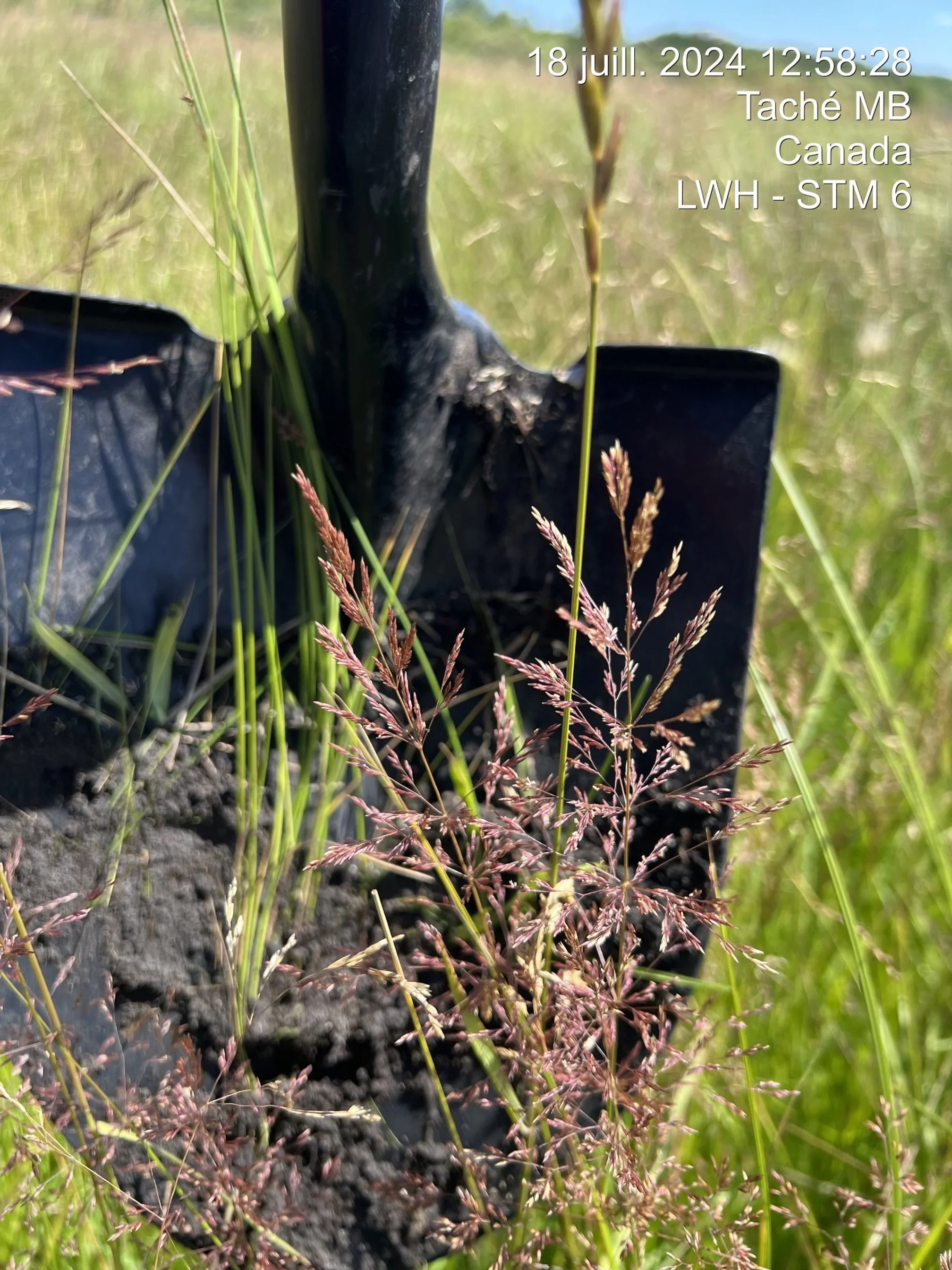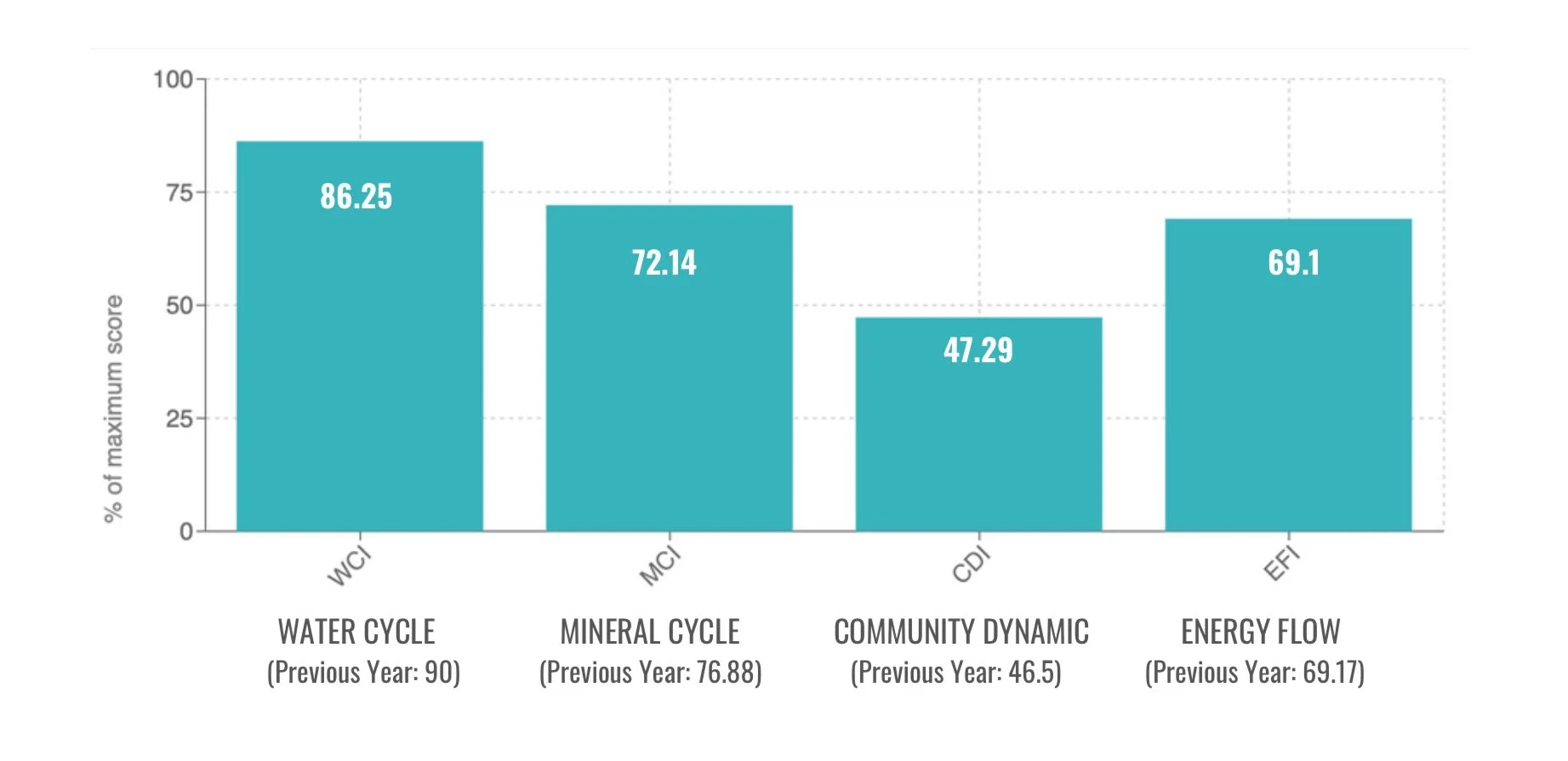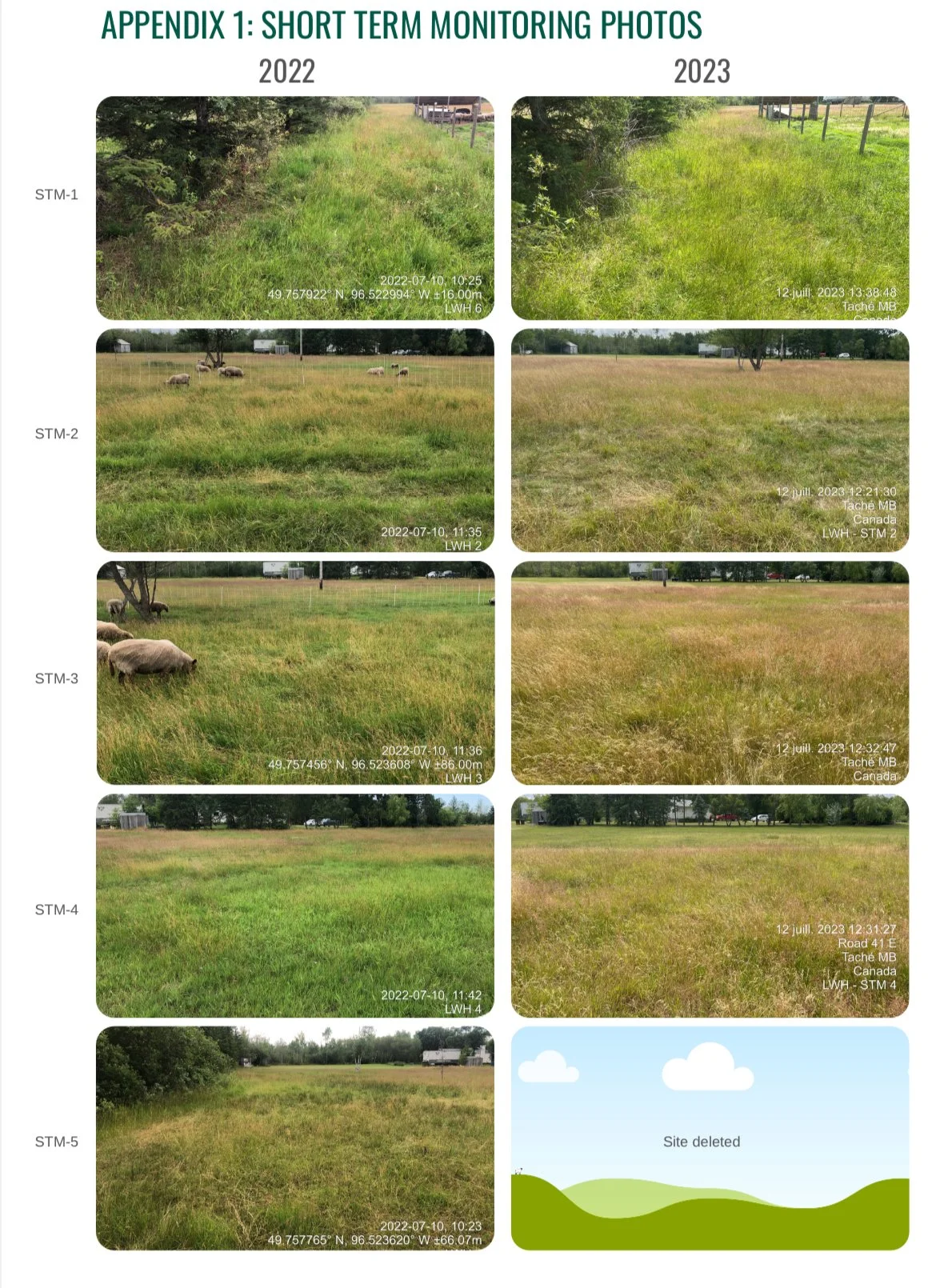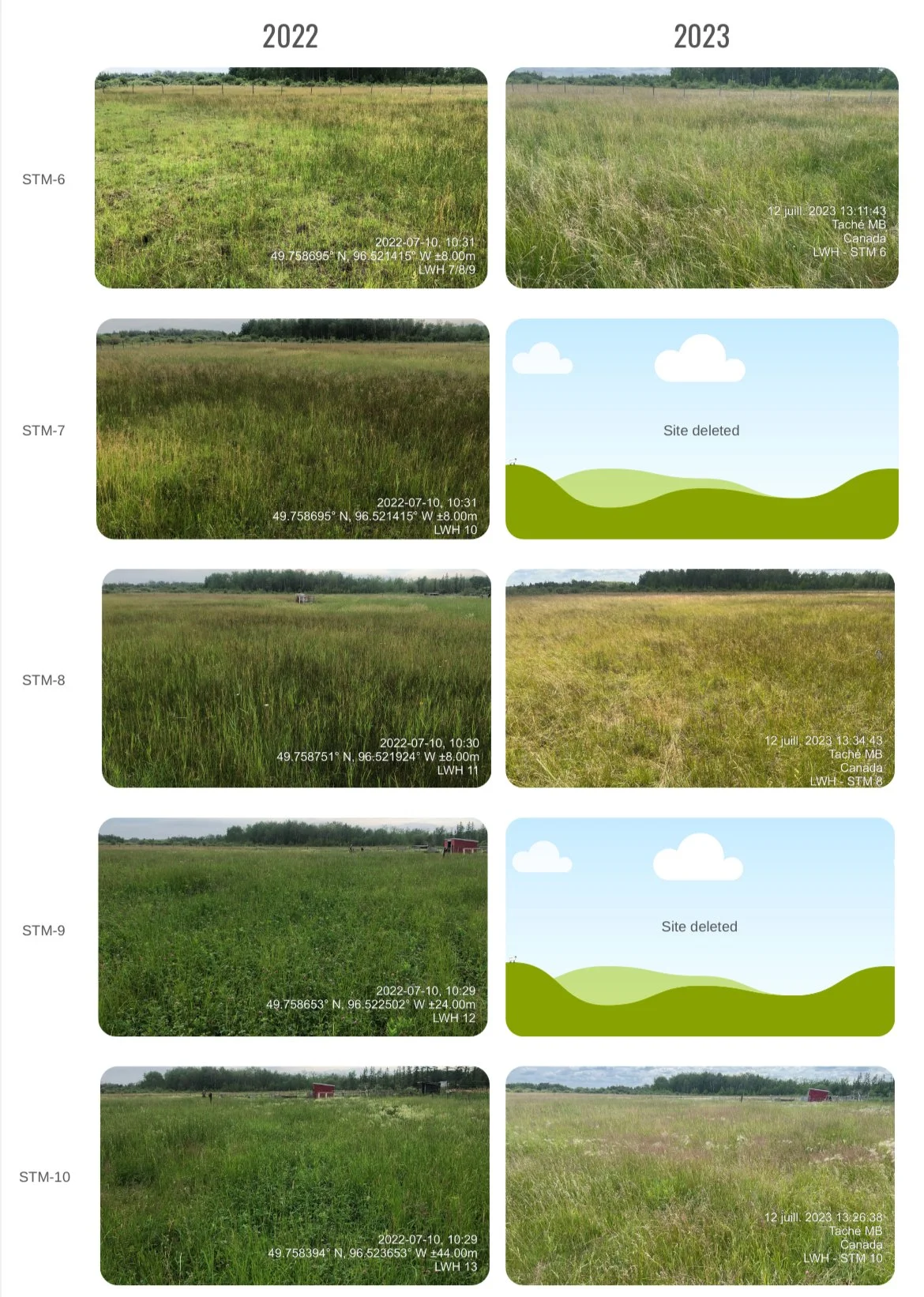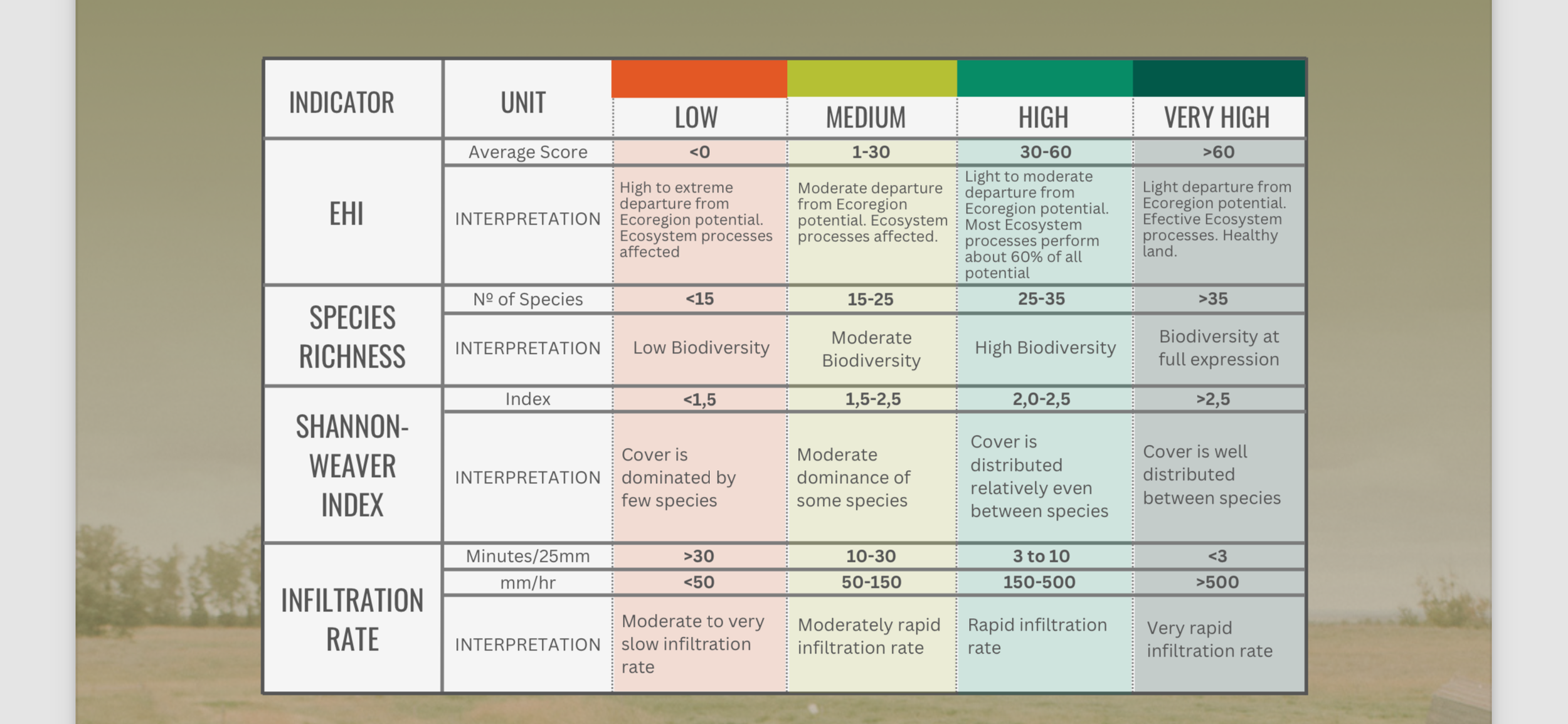Sheep and the Land - A Climate Beneficial Solution
Ruminants like sheep and cows often are blamed for the increasing carbon and GHG in our atmosphere - but seldom is their benefit to the land explored or explained in the conversation. At Long Way Homestead we believe that well managed sheep can be a benefit to the land and that using and wearing wool is actually a climate solution.
Image from Farm Carbon Toolkit
Let's do a real quick throw-back to high school science. All plants take in carbon dioxide (CO2) from the atmosphere. With help from the sun through the process of photosynthesis, they separate the oxygen molecules and send them back into the atmosphere for us to utilize, while some of the carbon is converted into a simple carbohydrate that feeds the plant. The remaining carbon is drawn into the roots of the plant where it begins to interact with the mycorrhizal fungi and is stored in the soil (soil organic carbon - SOC), working to build healthy soil microbes. In the absence of significant disturbance to the soil (serious tillage) the carbon can remain in the soil for a very long time and works with the roots of plants to exchange nutrients to assist with further plant growth and to build soil organic matter.
When our land base has healthy soil organic matter we see increased water and nutrient retention, greater plant productivity, reduced erosion, species diversity, and increased food security. Soil organic matter is made up of organic compounds highly enriched in carbon.
There are many strategies to increase soil organic matter - some that we are using include: adding compost to the land, silvopasture, low or no-till planting, hedgerows or riparian planting, and managed grazing.
This managed grazing is where the sheep come into play!
When I open the gate to a new pasture for my sheep they hungrily race to the fresh new grass and immediately begin eating. As they are eating the tops of the plants they are stimulating the growth of those plants and encouraging more capture of CO2 from the atmosphere. If I leave my sheep to eat that particular stand of plants for too long they will chow down the plants too much and make it harder for those plants to take in that CO2 and recover. Regenerative farming practices encourage farmers to observe the appropriate amount of grazing to ensure the sheep have been adequately fed, while ensuring the grass is not over-grazed and unable to recover. In the winter we make a grazing plan to ensure the maximum amount of growth-rest-recovery-growth from the plants in our landbase and then we assess (and re-asses) constantly during the summer as the conditions and external factors change.
Within our grazing plan we use electric net fencing to move the sheep to a new paddock every 1-2 days, depending on what is happening in that specific paddock. While the sheep are grazing they are also dropping their manure across the land. Sheep manure is incredibly rich with nitrogen and other nutrients that decompose and feed the soil. Because we move the sheep often, they never concentrate their manure in a way that can damage or burn the soil. Manure replaces the need for synthetic fertilizers on our pastures. The combination of grazing, hoof disruption of the soil, and manure application in a well managed operation will lead to increased plant root activity and thus more draw down of carbon from the atmosphere and increased soil organic matter.
We also wanted to be able to quantify this change - to have some tangible ways to measure the impact we are having. We decided to participate in the Ecological Outcome Verification program through Holistic Management Canada; we are headed into our fourth year of monitoring. The baseline year they did soil samples that measured the amount of soil organic carbon in our soil at multiple different sites.
Despite the challenges in soil carbon sampling and measuring I like this baseline to understanding what is happening and how we are impacting the landbase. Anecdotally, I can see how our animal management has already made a difference in our soil based on these results. The highest measurement of Soil Organic Carbon was site 3 and site 1 - this happens to be the pastures we have run our sheep and our pasture raised chicken on longer than any other sample site. The combination of manure, managed grazing, and constant ground cover is evident in the amount of soil carbon and soil organic matter. Check out some of the long-term changes we are seeing on our land base through the Ecological Outcome Verification monitoring below.
Anna moving electric net fencing for a new paddock for sheep (2023)
Resources to learn more about Regenerative Agriculture and Climate Focused Farming
Regenerative Agriculture Canada
Fibershed
Farmers for Climate Solutions
Carbon Farming Solution
Doing some ecological monitoring and a birds eye view of our farm and where we test.
During testing we clip all the forage in a measured out area, and measure the biomass, we also test the soil and look for root/soil health.
Ecological Outcome Monitoring and Verification at Long Way Homestead
We started the monitoring and verification of our farm in 2022 through Holistic Management Canada and their Ecological Outcome Verification program (EOV). EOV™ is a practical and scalable soil and landscape assessment methodology that tracks outcomes in biodiversity, soil health, and ecosystem function (water cycle, mineral cycle, energy flow and community dynamics). EOV™ was developed in collaboration with leading soil scientists, ecologists, agronomists, and an extensive network of regenerative land managers around the world.
Besides monitoring and verifying our own farm Anna has been training as a monitor and has been collecting data from other farms across Manitoba that are involved in the program.
In 2022 we determined our baseline for both short-term monitoring (completed every year) and long-term monitoring (every 5 years). Here are a few of the benchmark changes in the two years we have been monitored:
Background
Long Way Homestead is located in the Lake Agassiz and Lake Manitoba Plain Ecoregion in Ste. Genevieve, Manitoba, Canada. The landbase covers 140 acres. The homestead has been converted to perennial grassland and set up for sheep for fibre production and to regenerate the landscape.
On July 12th, 2023, Ecological Outcome Verification Short Term Monitoring was conducted to measure “leading” indicators of ecological health. This data was compared to baseline data gathered in 2022. Landscape function (Energy Flow, Water Cycle, Mineral Cycle and Community Dynamics) was assessed through the Ecological Health Index (EHI). EHI is assessed through an evaluation matrix customized to the Lake Agassiz and Lake Manitoba Plain Ecoregion.
ECOSYSTEM FUNCTION ANALYSIS (How far ecosystem processes are from their potential across the farm)
Compared to the previous year, the water cycle and mineral cycle indicators decreased. The community dynamic indicator increase, and the energy flow indicator stayed the same. The water cycle is largely measured by the surface of the soil. The lack of litter abundance contributed to this decrease and there was bare ground present. Mineral cycle is effected by the abundance of living microorganism and litter decomposition. The lack of litter and the severe drought this year most likely played a large part in this. The energy flow is largely measured through live canopy abundance, which stayed the same this year. Community dynamic is measured by the health and vigor of all the different types of plants in each functional plant group. Warm season grasses are starting to show up at the sites, which caused an increase. However 2 out of the 3 new sites we added this year had shrubs present compared to the two out of the three we deleted from last year that did not have shrubs or warm season grasses.
Remember that while this graph shows potential areas of improvement, remember that all of these ecosystem functions are linked. For example, improving the community dynamics will improve energy flow which can affect the mineral and water cycle.
Summary
The Landbase Ecological Health Index varied from 40 to -5, with an average of 15.5
The EHI score increased 8.5 points from 2022.
The report, photos, graphs and summary allow us to see what is happening from year to year. The goal isn’t to focus solely on the numbers (drought years can change everything) but to see over the long-term that the ecological health indicators are improving.
It feels a bit vulnerable to share our score and to see that we generally rank in the ‘medium’ category - but we have so much to learn and so much to grow - and that is really exciting.
We are grateful to have this tool to use and help us as we work to make our farm a healthier, more diverse and ecologically beneficial landbase.
